During the 10 days I spent in Croatia, I ate about 10,000 calories worth of wine, pastries, pasta and seafood per day! I know you are thinking, Where does the food go? I actually walked about 10 miles a day through historic squares, cobblestone streets and parks filled with spring flowers, so everything evened out!
While its hard to include all the delicious things you can find to eat and drink in Croatia, here are my favorites. Trust me, you will not be doing justice to yourself if you leave the country without tasting all of them!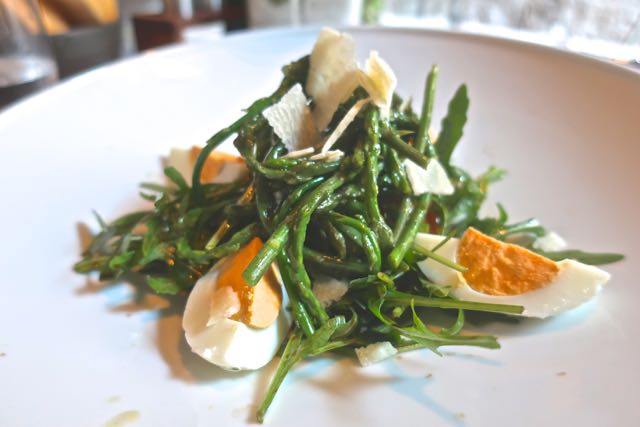
Baby asparagus salad with boiled eggs at O’Zalata Restaurant (now closed) was located inside the walled city in Split. During spring, wild asparagus are found along hillsides and people pick them up while hiking. These are much thinner than what you find in the American supermarkets and have a lovely crunchy texture.
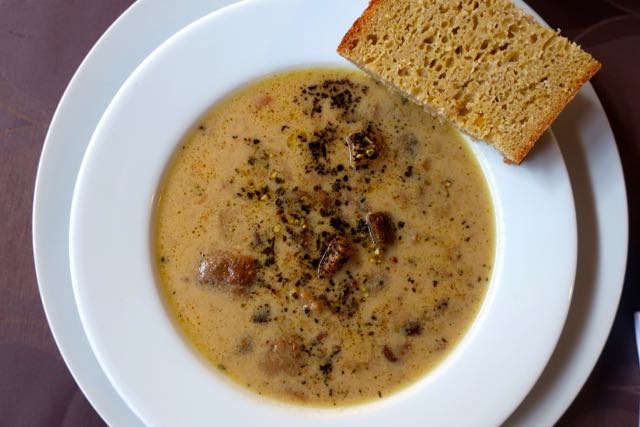 Mushroom soup made with 20 different kinds of mushrooms at Gabreku 1929 Restaurant in Samobor. Named best restaurant in this part of Croatia, the chefs collect mushrooms from all seasons, preserves them, and use them in this amazing soup that is famous in northern Croatia. It is serve with mushroom trumpet powder and pumpkin powder. Even the bread is made fresh daily using local grains and corn.
Mushroom soup made with 20 different kinds of mushrooms at Gabreku 1929 Restaurant in Samobor. Named best restaurant in this part of Croatia, the chefs collect mushrooms from all seasons, preserves them, and use them in this amazing soup that is famous in northern Croatia. It is serve with mushroom trumpet powder and pumpkin powder. Even the bread is made fresh daily using local grains and corn.

When I saw people lining up to get a piece of this pie at The Riva (Split waterfront), I had to taste it. Soparnik is a Swiss chard stuffed savory pie and is the most famous speciality of the Dalmatian region. It originated from pizza as a poor man’s food. You can find many street vendors selling their own recipe of soparnik.
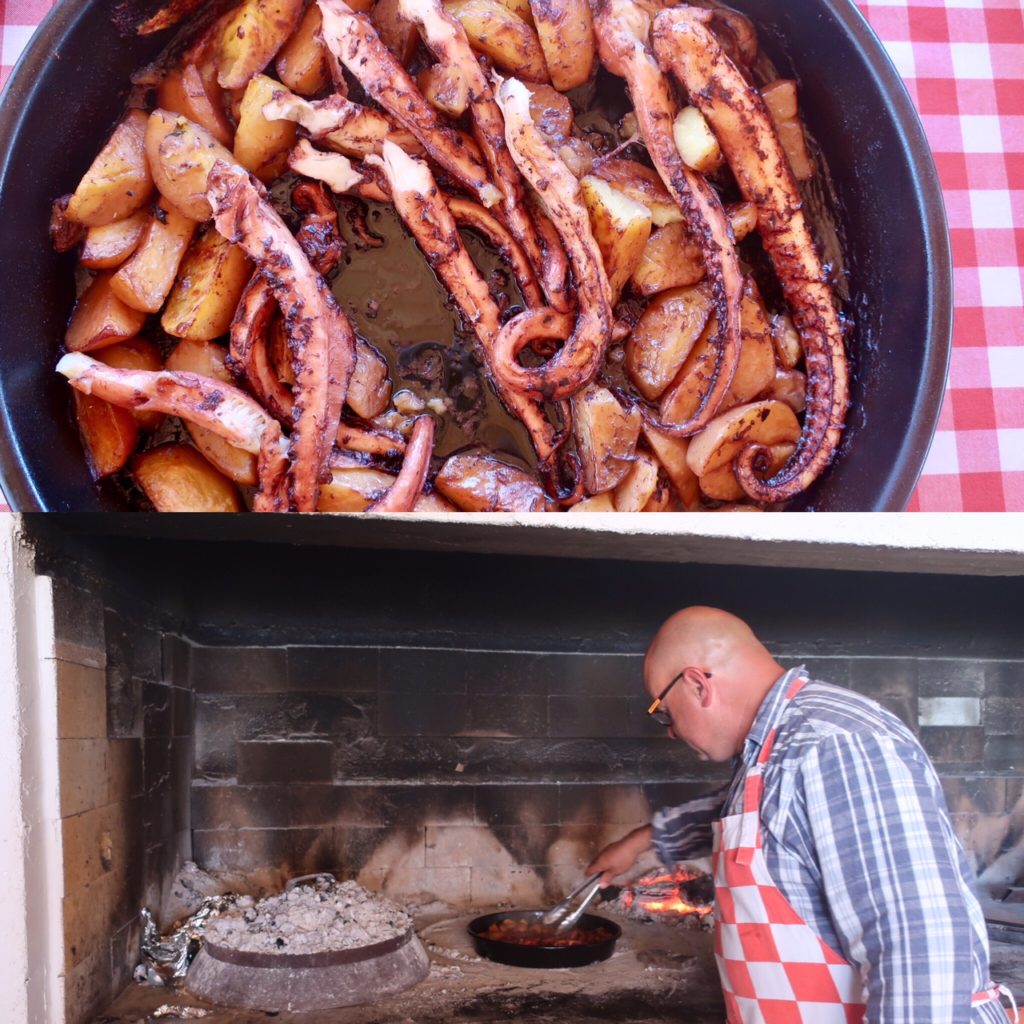
The island of Hvar is famous for Peka, which is usually made with veal or lamb and potatoes, cooked under an iron bell filled with charcoal. My hosts, Borivoj and Zeljka Bojanic, who run Konoba Maslina Restaurant in the village of Vrisnik, cooked me a tender grilled octopus peka. It was tender, juicy and so flavorful. I’m sure they got the fresh catch earlier that morning. Even if you are not an octopus fan, this would make you one!
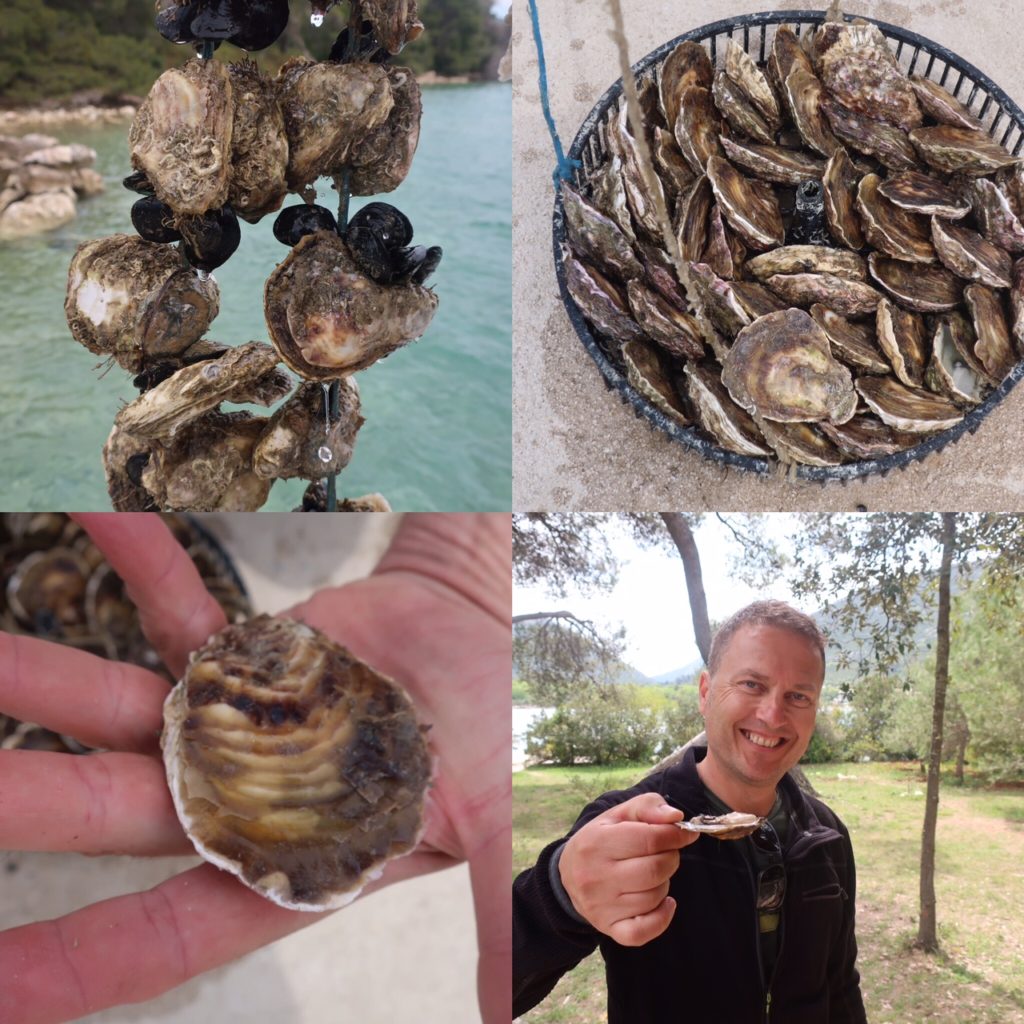
Most tourists stay inside the walled city of Dubrovnik, which can get very crowded specially when cruise ships dock. My guide, Tomi from Viator Travel, drove me to Pelješac peninsula near Dubrovnik, where we took a small boat into the sea accompanied by an oyster and mussel farmer. He picked up oysters straight out of the water, shanked them open, drizzled lemon juice, and handed them over to us. A bit raw and live for my taste, but could it get any fresher than this?
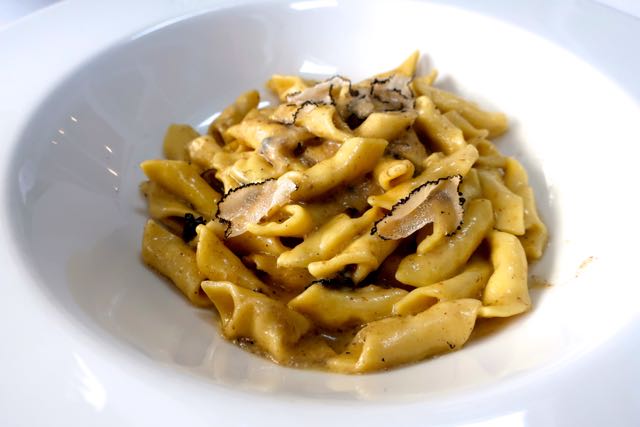 Zagreb has a lot of good restaurants serving Italian, Croatian, Middle Easter, Mediterranean and European cuisines. Though I had many delicious meals in the capital, the best place I ate was Vinodol Restaurant in the heart of downtown Zagreb. The ambiance was beautiful, but the Fuji pasta with fresh black Istrian truffles, and a glass of Istrian wine – were to die for!
Zagreb has a lot of good restaurants serving Italian, Croatian, Middle Easter, Mediterranean and European cuisines. Though I had many delicious meals in the capital, the best place I ate was Vinodol Restaurant in the heart of downtown Zagreb. The ambiance was beautiful, but the Fuji pasta with fresh black Istrian truffles, and a glass of Istrian wine – were to die for!
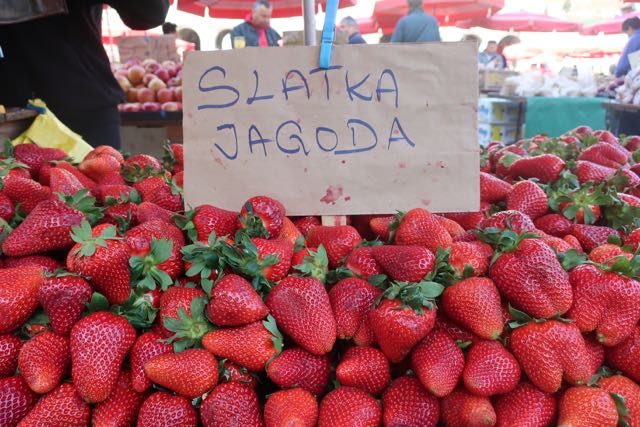 Why would you travel to a place to eat fruit? Because it the sweetest organic farm fresh strawberries you can find for really cheap! At Dolac Farmers Market in Zagreb, I bought a pint of giant organic sweet and juicy strawberries for $1.50, and devoured them sitting in the park surrounded by tulips. Heaven!
Why would you travel to a place to eat fruit? Because it the sweetest organic farm fresh strawberries you can find for really cheap! At Dolac Farmers Market in Zagreb, I bought a pint of giant organic sweet and juicy strawberries for $1.50, and devoured them sitting in the park surrounded by tulips. Heaven!
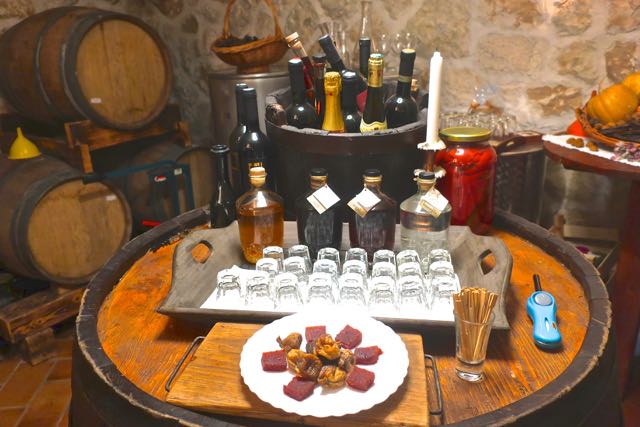 Croatians make all kinds of homemade brandies (called rakia or raki) using fruits, nuts and honey, often using what’s growing in their own backyards or gardens. These home brews are had at home (before and after dinner) or sold at local farmer’s markets. One of the best raki’s I tasted was at a simple kiosk located in the Craft Square in Varaždin. The lady who produced the honey brandy even raised her own bees for the honey that she used in the brandy. Talk about knowing the source of your food!
Croatians make all kinds of homemade brandies (called rakia or raki) using fruits, nuts and honey, often using what’s growing in their own backyards or gardens. These home brews are had at home (before and after dinner) or sold at local farmer’s markets. One of the best raki’s I tasted was at a simple kiosk located in the Craft Square in Varaždin. The lady who produced the honey brandy even raised her own bees for the honey that she used in the brandy. Talk about knowing the source of your food!
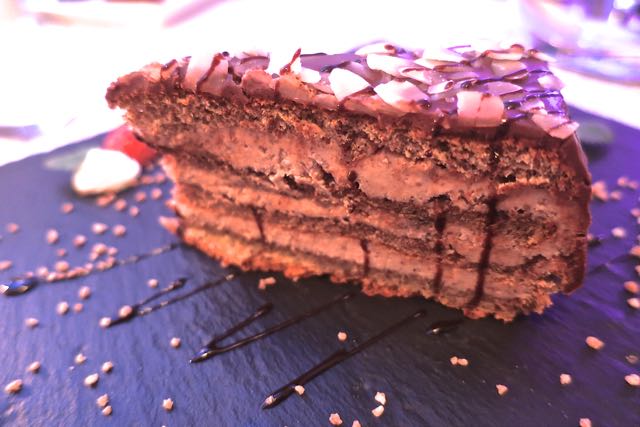 Another amazing dinner I had was at the family-owned upmarket Restoran Palatin in Varaždin. The meal was scrumptious, but the icing on the cake (literally speaking) was the Palatin Cake for dessert. The owner told me that this 6 layers of rich chocolate and chestnuts pastry was a 100-year old family recipe.
Another amazing dinner I had was at the family-owned upmarket Restoran Palatin in Varaždin. The meal was scrumptious, but the icing on the cake (literally speaking) was the Palatin Cake for dessert. The owner told me that this 6 layers of rich chocolate and chestnuts pastry was a 100-year old family recipe.
 No visit to Samobor is complete without Kremšnite or Kremšnita, a local pastry made with cream custard. It is served warm in the northern part of Croatia, and eaten for breakfast and dessert. Sign me up! In fact, many people come to Samobor on the weekends, only to grab a slice of this comfort food.
No visit to Samobor is complete without Kremšnite or Kremšnita, a local pastry made with cream custard. It is served warm in the northern part of Croatia, and eaten for breakfast and dessert. Sign me up! In fact, many people come to Samobor on the weekends, only to grab a slice of this comfort food.
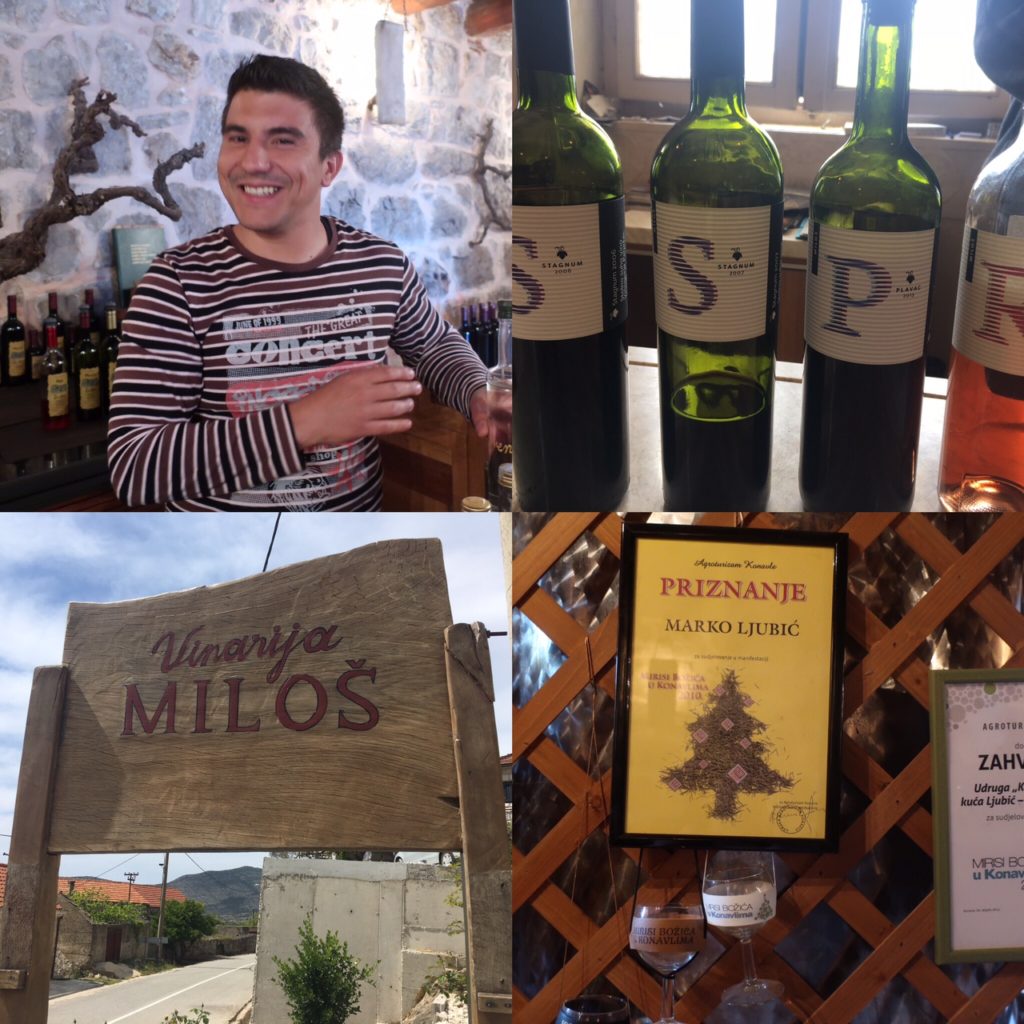
I also visited many wineries in Hvar and Dubrovnik that are worth visiting. Croatia produces excellent quality red and white wines, my favorite being malvazija (malvasia) from Istria, plavac mali from Dalmatia, and Dingač from Pelješac peninsula.
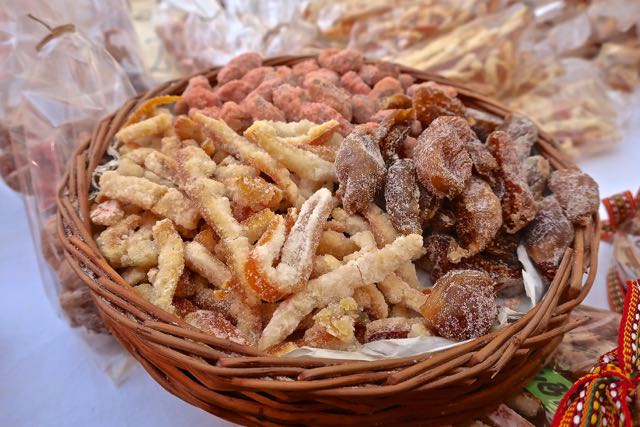 If you need something to bring back home and remember the flavors of Croatia, food markets and souvenir shops across southern Croatia sell packets of candied dry fruits. Arancini are traditional homemade sweets made with candied figs, orange or almonds, that are crunchy, long lasting and taste amazing with a shot of rakia.
If you need something to bring back home and remember the flavors of Croatia, food markets and souvenir shops across southern Croatia sell packets of candied dry fruits. Arancini are traditional homemade sweets made with candied figs, orange or almonds, that are crunchy, long lasting and taste amazing with a shot of rakia.